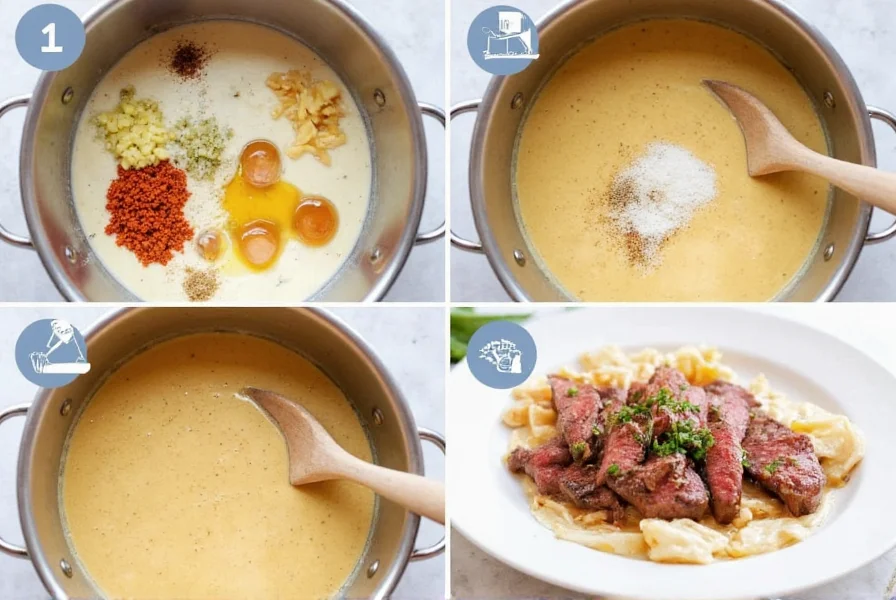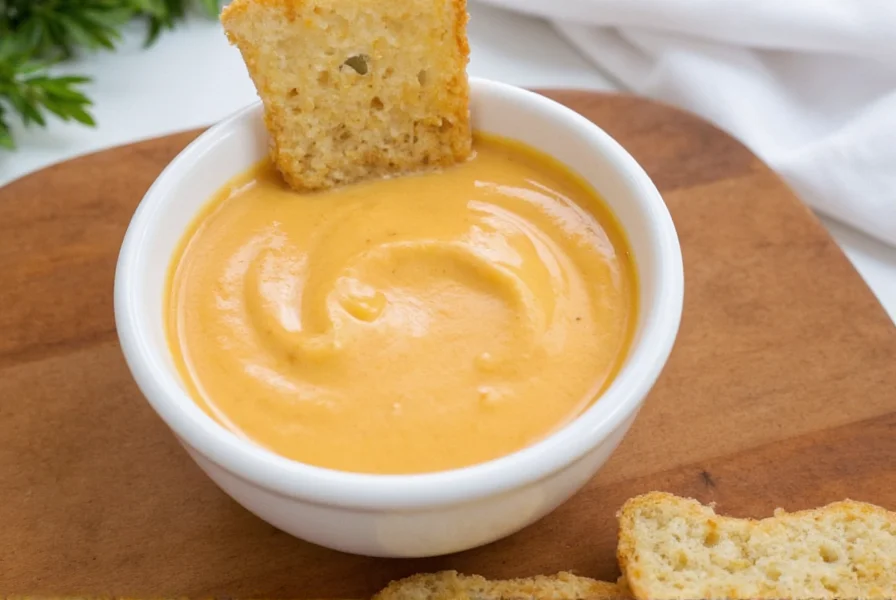Creating the perfect pepper cream sauce requires understanding its fundamental components and preparation techniques. Unlike basic cream sauces, the distinctive character of pepper cream sauce comes from the careful selection and treatment of peppercorns, which provide both heat and aromatic complexity. Professional chefs often use a combination of freshly cracked black pepper and white pepper to achieve balanced heat without overwhelming visual speckling.
The Essential Ingredients for Authentic Pepper Cream Sauce
The magic of pepper cream sauce lies in its simplicity. You only need a handful of quality ingredients to create this restaurant-standard sauce at home. The foundation consists of heavy cream (minimum 36% fat content), unsalted butter, and high-quality peppercorns. Fresh shallots or onions provide aromatic depth, while a splash of brandy or cognac adds complexity that elevates the sauce beyond basic preparations.
| Ingredient | Quality Recommendation | Substitution Options |
|---|---|---|
| Peppercorns | Freshly cracked Tellicherry black peppercorns | White pepper for milder heat |
| Cream | Heavy cream (36%+ fat) | Half-and-half for lighter version |
| Aromatic Base | Fresh shallots | Yellow onion or leeks |
| Alcohol | Cognac or brandy | Dry white wine or omit |
Step-by-Step Preparation Guide
Follow this professional technique to create a smooth, flavorful pepper cream sauce that won't break or separate. Begin by sweating finely minced shallots in butter over medium-low heat until translucent but not browned—this forms the flavor foundation without introducing bitter notes. Add your cracked pepper (about 1½ tablespoons for standard recipe) and cook for 30 seconds to release essential oils.
Next, deglaze the pan with ¼ cup cognac, scraping up any browned bits while allowing the alcohol to reduce by half. This critical step concentrates flavors and eliminates raw alcohol taste. Gradually whisk in 1½ cups heavy cream, bringing the mixture to a gentle simmer. Maintain a low simmer for 8-10 minutes until the sauce reduces by about one-third and coats the back of a spoon.
For the smoothest texture, strain the sauce through a fine-mesh sieve to remove pepper particles and shallot pieces. Return to low heat and finish with 1 tablespoon cold butter, whisking until fully incorporated. This final step, called monter au beurre, gives the sauce its signature glossy finish and velvety mouthfeel. Season with salt to balance the flavors, remembering that pepper provides both heat and saltiness.
Perfect Pairings for Pepper Cream Sauce
While traditionally served with steak—particularly filet mignon or ribeye—pepper cream sauce complements a wide range of proteins and vegetables. The rich, peppery profile cuts through fatty meats while enhancing leaner proteins like chicken breast or pork tenderloin. For vegetarian options, try it with roasted mushrooms, asparagus, or cauliflower steaks.
When serving with pasta, opt for sturdy shapes like fettuccine, pappardelle, or penne that can hold the sauce's weight. Toss the cooked pasta directly in the sauce rather than pouring it on top for maximum flavor integration. For seafood pairings, consider using white pepper cream sauce with delicate fish like halibut or scallops to avoid overpowering their subtle flavors.
Common Mistakes to Avoid
Many home cooks encounter issues with pepper cream sauce due to common preparation errors. The most frequent problem is curdling, which occurs when the cream is heated too rapidly or to too high a temperature. Always maintain a gentle simmer—never a rolling boil—to prevent separation.
Another common mistake involves pepper quantity and preparation. Pre-ground pepper lacks the aromatic complexity of freshly cracked varieties and can create a muddy texture. For optimal results, crack your peppercorns just before use. If you find the pepper flavor too intense, bloom the cracked peppercorns in the butter for a shorter duration or reduce the quantity slightly.
Seasoning balance presents another challenge. Many cooks under-salt pepper cream sauce, not realizing that salt enhances rather than competes with the pepper flavor. Taste carefully before serving, adjusting salt to bring out the full flavor profile without making the sauce taste salty.
Variations for Different Culinary Applications
Chefs often adapt pepper cream sauce for specific dishes while maintaining its essential character. For a lighter version suitable for chicken or fish, substitute half the cream with chicken or fish stock. The au poivre variation incorporates additional elements like Dijon mustard or cornichons for a more complex profile that pairs exceptionally well with steak.
For those seeking dairy-free alternatives, a cashew cream base can replicate the richness while accommodating dietary restrictions. Soak 1 cup raw cashews in hot water for 15 minutes, then blend with ¾ cup water until completely smooth. Use this as your cream substitute, adding the same pepper and aromatics for a plant-based version that maintains the sauce's essential character.

Storage and Reheating Guidelines
Proper storage ensures your pepper cream sauce maintains quality for future meals. Cool the sauce to room temperature within two hours of preparation, then transfer to an airtight container. Refrigerated sauce keeps for 3-4 days. For longer storage, freeze in ice cube trays then transfer frozen portions to freezer bags—this method preserves quality for up to 3 months.
When reheating, use gentle methods to prevent separation. Place refrigerated sauce in a saucepan over very low heat, stirring constantly. If the sauce appears thin after reheating, simmer gently to reduce and thicken. Never microwave cream sauces, as the uneven heating almost always causes separation. For frozen sauce, thaw overnight in the refrigerator before reheating using the stovetop method.
FAQ
What's the difference between pepper cream sauce and béarnaise?
Pepper cream sauce features a cream base with prominent cracked pepper flavor, while béarnaise is a warm emulsion of clarified butter, egg yolks, and tarragon vinegar reduction. Béarnaise has a more complex herbal profile and delicate texture, whereas pepper cream sauce offers straightforward richness with bold pepper notes.
Can I make pepper cream sauce without alcohol?
Yes, you can omit the brandy or cognac. Substitute with an equal amount of beef or vegetable stock, or simply increase the cream slightly. The alcohol primarily enhances flavor complexity and helps emulsify the sauce, but the dish remains delicious without it.
Why does my pepper cream sauce separate?
Separation typically occurs from overheating (boiling instead of simmering), adding cold ingredients to hot sauce, or insufficient fat content. To prevent this, maintain gentle heat, use room-temperature cream, and ensure your cream has at least 36% fat content. If separation happens, remove from heat and whisk in 1 tablespoon cold butter to re-emulsify.
How can I make pepper cream sauce less spicy?
Reduce the amount of black pepper or use a combination of black and white pepper. Bloom the cracked peppercorns in butter for a shorter time (15-20 seconds instead of 30), or strain the sauce thoroughly to remove larger pepper particles. Adding a small amount of sugar can also balance perceived heat without making the sauce sweet.
What's the best type of pepper for cream sauce?
Tellicherry black peppercorns offer the best balance of heat and complex flavor notes for cream sauces. Their larger size contains more essential oils that provide aromatic depth without excessive heat. For a milder version with visual appeal, combine Tellicherry with white peppercorns in a 2:1 ratio.











 浙公网安备
33010002000092号
浙公网安备
33010002000092号 浙B2-20120091-4
浙B2-20120091-4